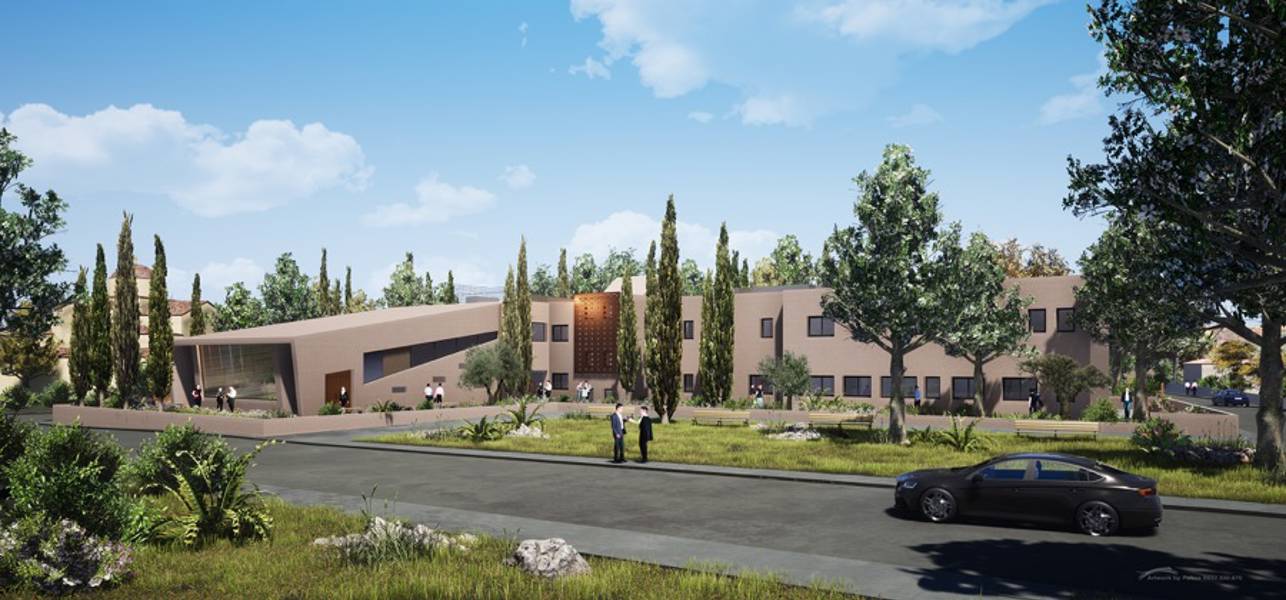
Reviving two Greek Cultural Traditions: Hagiography and Byzantine Music
In October 2019, much to my delight, the Stavros Niarchos Foundation (SNF) approved a grant to the Holy Metropolitan Church of Monemvasia and Sparta for the design and construction of a new building to house the Schools of Hagiography and Byzantine Music.
The Holy Metropolitan Church of Monemvasia and Sparta was established in 1082, and since then it has played a leading role in the city’s development and history. In our times, under the leadership of Metropolitan Efstathios, the Church has done important charitable work by establishing and supporting numerous social welfare institutions (including a home for older people in Elika funded by the Foundation) and also in the area of culture through the establishment of the Museum of Ecclesiastical Art.
In 2016, His Eminence Metropolitan Efstathios established officially a hagiography school, with 110 students between 16 and 70 years old, as well as a Byzantine music school, with 130 students. The driving vision was to establish a high-caliber educational center for the revival, teaching, research, and practice of these two most distinguished Byzantine arts. In addition, this center, beyond teaching, will organize various artistic and social events that will enrich the cultural life of Sparta and beyond, across Greece and internationally.
Even during the three years the schools have been in operation with minimal infrastructure, both have flourished and have gained considerable reputation in Sparta, giving people—especially young people—the chance to cultivate their talent in an environment expressly designed for the revival of these arts. The students take part in many ecclesiastical and social events while achieving promising professional development in these arts.
As a Laconian myself, Metropolitan Efstathios’s vision for engaging young people in the revival of two of the most hallowed Greek traditions touched my heart, as I could not think of a more appropriate place and environment for such an endeavor to succeed. Indeed, the city of Sparta and the surrounding area of Laconia (Lacedaemonia) are world-famous, not only for the leading and glorious role they played in antiquity, but also for the renowned and admired castle-cities of Monemvasia and Mystras, representatives of its rich Byzantine tradition. The fact that Konstantinos XI Paleologos, despot of Morea and last Emperor of the Byzantine Empire, was crowned in Mystras indicates the exceptional role of this area in the Byzantine times.
Currently, technical studies are being completed for the building that will house the two schools. The design is progressing through close collaboration and working sessions with His Eminence and the teaching staff. The team has embraced the approach of a rich building program with all necessary infrastructure, such as lecture rooms, a fully equipped recording studio, a lecture theater, all necessary hagiography and maintenance laboratories, and more. Equipped with modern information and communications technology, the educational programs will have the opportunity to expand, through distance learning, beyond the physical framework of the schools and establish creative programs with other institutions or sociocultural centers such as Vamvakou Village, where mutually beneficial productive synergies and bonds could be developed.
The Foundation’s Technical team works closely on the evaluation and implementation of certain grants, particularly in Greece, helping ensure that they are completed on time, on budget, and to a high standard of quality. However, far more than from considerations of architecture and engineering, sustainable success for this—and every—grant comes from the passion and vision of the people behind it to deliver broader added value for society.
Theodore Maravelias
SNF Chief Technical Grants Officer
Athens